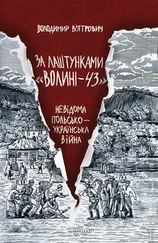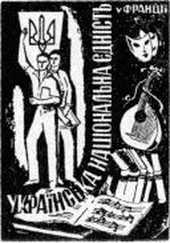The Division received general support, especially from the young people and the former officers of the Ukrainian army of the First World War, and the Ukrainians saw in the creation of such a Division the first nucleus of a future Ukrainian Army which, with the end of the war, could play a decisive role in the restoration of a Ukrainian Independent State. In his conferences and negotiations with Governor Waechter, Prof. Kubijowytsch presented demands that the Division have a Ukrainian character mirrored in its name, badges and rank designations, and its own Ukrainian commanders; that it would be treated as a separate entity, and would be used only on the front against the Bolsheviks; that the soldiers would be assured of spiritual care from their own Ukrainian chaplains; and, finally, that whole cadres of young Ukrainian officers and non-commissioned officers be created through special training programs. An additional demand was made that a military committee be formed to handle all matters pertaining to the Division and to maintain close liaison with the Ukrainian Central Committee.
The German authorities in Berlin accepted only a part of these demands and promised to solve the other questions raised at a later date; but, as it turned out, the promises were never fulfilled. The commanders of the Division were Germans and the emblem of the Division was not the Trident, the symbol of Ukrainian Statehood, but the coat of arms of Galicia, a lion rampant. A military committee was formed, headed by Colonel Alfred Bisanz, a German born in Western Ukraine, who had been a Colonel in the West Ukrainian Army during the First World War, and who was subordinated to the Governor. The ignoring of the Ukrainian demands, and later the failure to keep the promises made, were the basis of a continuous state of dissatisfaction in the Division for the entire period of its existence.
In the month of May, 1943, nearly 80,000 Ukrainians volunteered for service in the Division, not only from the territories of Galicia but from all parts of the Government-General. Amongst these were a large number of former officers of the World War I West Ukrainian Army. Out of this number, 27,000 were found to be fit for military service, 19,000 were enlisted, and 13,000 actually reported for duty in the Division. The first group of volunteers were sent to training camps on the 18th of July, 1943: 350 to officers' schools in the Reich, 2,000 for non-commissioned officers' training, and 2,000 more to the training camp in Heidelager. Others were sent to various training centres, mostly to the so-called police regiments. In the fall of 1943, the Commanding Officer of the Division was appointed, S.S. Oberfuehrer Fritz Freitag (later promoted to Brigade Fuehrer and Major General of the Waffen S.S.). But it was only with General Freitag's arrival in Heidelager and the appointment of Major Heike as Chief of Staff to the Division that the training began in earnest. It is only from this point that the author records the history of the Division in great detail, chapter after chapter. The earlier days are treated briefly.
The author of this book was a professional German soldier and a staff officer (he was the only staff officer in the Division who had never belonged to any S.S. or police formation). He portrays, in chronological order factual matters dealing with the training and the combat duty of the Division based upon his diary, salvaged military maps and his memory. The book was completed in 1947 while he was still in an English prisoner of war camp. Twenty years later, it was translated into the Ukrainian language in somewhat abbreviated form with the permission of the author. The book is illustrated with military and tactical sketches, prepared on the basis of materials in the possession of the author, photographs collected by the Central Executive of the Brotherhood of Former Soldiers of the First Division of the Ukrainian National Army which is also responsible for the publication of this book. An introduction was written by Prof. W. Kubijowytsch who also edited it. The first chapter in the book is devoted to the formation and training of the Division. Until the month of March, 1944, this took place in the camp in Heidelager near the Polish town of Dembica, and later in the training camp in Neuhammer in Silesia. The Division was formed as a "Grenadier division." Officer and N.C.O. canditates were trained at various schools and courses in Germany and on completion of their training, were returned to the Division. A great number of the soldiers received training in Germany and France in the so-called police regiments, and it was only through persistent efforts on the part of the Ukrainian Central Committee, Governor Waechter and the commanders of the Division that these were finally transferred to the Division.
From the very beginning of the training period, difficulties arose: lack of Ukrainian officers and non-corns (former officers and non-commissioned officers of the Ukrainian Army of the 1917 to 1921 period were, in the great majority of cases, unsuited for military service because of their age and lack of experience and knowledge of new military techniques and tactics); the unfortunate choice of the Commanding Officer of the Division in the person of General Freitag; the absence of good German instructors and, finally, inadequate arms and unsatisfactory living quarters. General Freitag "was a preening bureaucrat who did not trust anyone, and in failing to understand and appreciate the political role of the Division and the psychology of the Ukrainian soldier, attempted to create just another German military unit, which happened to be composed of Ukrainian soldiers. He did not allow Ukrainian officers to be appointed to the staff and command positions, and even tried to fill the positions of company and platoon commanders with Germans. The author characterizes the Ukrainian officers and non-commissioned officers and compares them to their German opposites, stresses the complete lack of understanding of the psychology and customs of the Ukrainians by Germans and criticizes German training programs based on the principle of "obedience unto death" which was not suited to Ukrainians. The political counsellor to General Freitag in Ukrainian matters and spokesman for the Ukrainian officers was Captain Dmytro Palijiv who also fulfilled the unofficial function of liaison officer between the Division, the Ukrainian Central Committee and the Military Committee. He died in the battle of Brody.
Among many episodes, the author mentioned the activities of a combat group of the Division under the command of Colonel Beyersdorff which, in the month of February, was assigned the task of combatting Soviet partisans in the Kholm region, even though the Division had not as yet completed its military training. Another episode in the life of the division described the visit of Reichfuehrer Himmler to Neuhammer. One short chapter is devoted to the portrayal of a typical day in the military training course of the division in Neuhammer before it was sent to the front.
The Staff of the Division and its protector, Governor Waechter, managed to obtain approval from the German High Command through its Commander-in-Chief of the Army Group "Northern Ukraine", Field Marshall Model, that the Division would be assigned to a relatively quiet portion of the front in Western Ukraine, near the City of Stanyslaviv, occupied by the First Panzer Army, where it would complete its training and gradually acquire battle experience.
Unexpectedly, this decision was altered towards the end of June and the Division was assigned a sector of the front lines held by the army group "Northern Ukraine", in the very center of the expected main enemy thrust. It was incorporated into the 13th Army Corps consisting of three Wehrmacht divisions and the Ukrainian Division. At first, the Division was held in reserve but later found itself at the point of greatest pressure from the advancing Red Armies. On the 18th of July, both the Division and the 13th Army Corps were encircled at Brody, and practically annihilated. The Red Army enjoyed a tremendous superiority in the number of troops, tanks and air power. Of the 11,000 soldiers in the Division, only 3,000 managed to break out of the encirclement. The Division had been given the most difficult task of containing the assault of the Red Army to permit the other units to escape. At this point, the Division Commander, Freitag, relinquished his command. The author not only describes the battle, factually illustrating it with drawings, but analyzes the root causes of the catastrophe. A separate chapter is devoted to his personal experiences in this tragic battle and the escape of the survivors from the circle of death. Of the 8,000 who did not break out, the largest number were battlefield casualties, some were taken as prisoners of war and others were able to join the Ukrainian Insurgent Army (U.P.A.) which had begun its struggle in the autumn of 1943. The survivors of the Division passed, on foot, through Sambir and the Uzhotsky Pass in the Carpathian Mountains onto the territory of Carpatho-Ukraine, which, since 1939, had been occupied by Hungary. Here, at Seredne, they camped for a breathing spell. Despite the un-complimentary and biased reports of General Freitag about the behaviour of the Ukrainians during the battle, Himmler accepted other favourable reports about the Division; motivated by political considerations, he ordered Freitag to form a new division, again in Neuhammer. The ranks of the new Division were filled by the 3,000 survivors of the battle at Brody, 8,000 soldiers from the reserve training regiment, and several companies, of Ukrainian officers and non-commissioned officers who had by then completed their various courses. The position of liaison officer was filled by Captain Makarushka, replacing Captain Palijiw, who had been killed in the battle at Brody. But now, even more than earlier, General Freitag appointed young, often inexperienced German officers to command posts in the Division. This only increased the frustration and dissatisfaction of the Ukrainians. Shortly thereafter, a combat group under the command of Lt. Colonel Wildner was detached from the Division and sent into Slovakia to combat the Slovak partisans who, under the leadership of Soviet partisans, were fighting against the pro-German Government of President Joseph Tiso. At the beginning of October, 1944, the rest of the Division was sent to Slovakia. In the region of Zilina it was completing its combat training, maintaining order and clearing the region of the remnants of the partisans. In these forays the Division got the weapons, including artillery, which it sorely lacked. During its stay in Slovakia, the Division was subordinated to the Commander-in-Chief of the German forces in Slovakia, General Hoefle, whose headquarters were in Bratislava. The attempts of Governor Waechter to change the Commander of the Division were not successful.
Читать дальше








